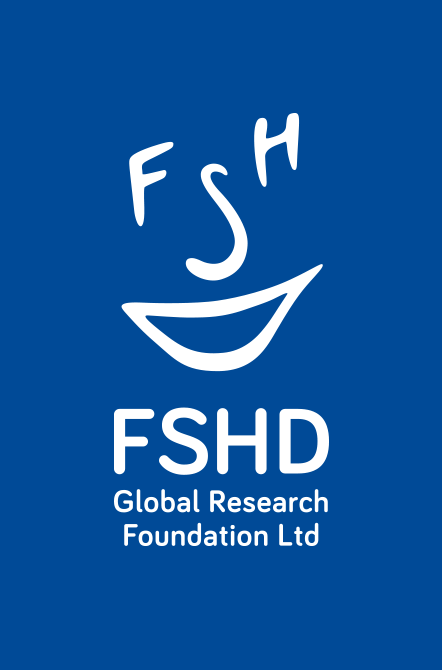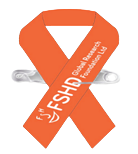GRANT 16
Research Institution: Division of Regenerative Medicine, San Raffaele Scientific Institute, Milano, ITALY
Principle Investigator: Dr Davide Gabellini & Dr Robyn Fitzsimons
Type: Collaborative
Project title: “Recreating the human chromosomal genetic defect responsible for FSHD in a mouse model.”
Status: Active
Summary
Project goal: Creation of a mouse model that better reflects FHSD Facioscapulohumeral muscular dystrophy (FSHD) is one of the most frequent forms of neuromuscular disease. Unfortunately, there is currently no treatment or cure for FSHD. The disease is associated with loss of genetic material (D4Z4) on chromosome 4 that is normally present in many copies toward one end of chromosome 4. FSHD patients have small D4Z4 copy number in their cells. Current animal models in mice are imperfect and the absence of an animal model that faithfully recapitulates key features of a human disease is a key step slowing down the development and test of therapeutic approaches. Unfortunately, D4Z4 repeats are present only in primates (humans, monkeys & apes) and not in laboratory animals such as mice. To solve this problem, Gabellini’s group is inserting human D4Z4 and the genes that have been involved in FSHD into mouse stem cells using a technology called ‘human artificial chromosomes’. This will generate animals that genetically resemble FSHD patients. This new animal model will allow scientists to study the pathways that are altered in the disease and test possible therapeutic approaches for future human clinical studies.
Dr. Gabellini’s group has already transferred engineered genetic material into the intermediate mouse cells needed to finalize the production of the artificial chromosomes. These will then be transferred to mouse stem cells in order to generate “FSHD mice” and control mice which contain the human D4Z4 genetic material without the mutation responsible for FSHD.
Laboratory website: http://www.hsr.it/research/davide-gabellini/
PROGRESS REPORTS
July 2011
Facioscapulohumeral muscular dystrophy (FSHD) is a genetic disorder involving a slowly progressive muscle degeneration, in which the muscles of the face, shoulder blades and upper arms are among the most severely affected. FSHD is associated with a reduced number of repeated copies of DNA on chromosome 4, in a region called D4Z4. This region of the DNA is repeated may times, near the end of the long arm of chromosome 4 in an exact position called 4q35. These repeated D4Z4 units of DNA are arranged like the carriages of a train. In healthy subjects, there are many D4Z4 units, the “HEALTHY train” goes slowly, and protein production from the FSHD region is kept under control. In FSHD patients, there are too few D4Z4 units, the “FSHD train” goes too fast and protein production from the FSHD region runs out of control. In particular, excessive production of two proteins coded for by DNA in the FSHD associated region (called DUX4 and FRG1), seems to play a role in the onset and progression of the FSHD disease. Dr. Gabellini’s group are interested in determining what causes the switch to excessive DUX4 and FRG1 protein production in FSHD and what are the contributions of DUX4 and FRG1 to the onset and progression of the disease. They plan to do this by mimicking in laboratory mice what has been found in FSHD patients. In particular, they want to make mice that produce FRG1 protein that have many D4Z4 (carriage) units and mice that produce FRG1 protein that have few D4Z4 (carriage) units. They firmly believe that if we understand how protein production from the FSHD region is regulated we can find ways to treat FSHD by bringing it back to normal in human patients.
Update August 2012
The goal of this research project is to understand the molecules causing
facioscapulohumeral muscular dystrophy (FSHD) and to develop effective treatments. FSHD is the third most common form of muscular dystrophy. Its major symptom is the progressive weakening and loss of specific muscles controlling movement, called skeletal muscles. Presently, there is no treatment or cure for FSHD. Nearly all cases of FSHD are associated with a missing piece of genetic material (DNA) on chromosome 4. This piece of DNA is called D4Z4 and is repeated may times toward one end of chromosome 4, called the long arm. Our results indicate that D4Z4 controls the activity of nearby genes involved in FSHD. We have found that in FSHD patients there is an increased production of proteins by these genes close to D4Z4. In particular, excessive production of two proteins located in the FSHD region (called DUX4 and FRG1) seems to play a role in FSHD onset and
progression.
Since FSHD is a disease of unbalanced protein production, the understanding of how protein production is regulated from the FSHD region could teach us how to normalize it in FSHD patients. In FSHD, the disease affects only certain muscles, but gets progressively worse over time. For this reason, we would like to study DUX4 and FRG1 expression in different tissues and at different times after birth in a healthy and FSHD individuals. To perform this systematically, we are generating mice with FRG1 and many D4Z4 copies and mice with FRG1 and few D4Z4 copies, for study. Since we are interested in understanding how DUX4 and FRG1 are regulated, we are examining the FSHD chromosome region to make sure that all the important regulatory components for the correct expression of these genes will be present in the mice. These components will then be put together into stem cells and these modified stem cells will be used to generate a new mouse model of FSHD. The model will allow us to understand what causes the switch toward excessive DUX4 and FRG1 protein production in FSHD and their relative contribution to the disease. Finally, we will be able to test possible treatments for the disease, using these FSHD mice.
Update January 2013
Research in Dr Gabellini’s laboratory is aimed at understanding the cause of facioscapulohumeral muscular dystrophy (FSHD) in order to develop effective treatments. FSHD is one of the most frequent forms of muscular dystrophy. Currently, there is no treatment or cure for FSHD. The classical form of the disease is associated with loss of genetic material (DNA) on chromosome 4. A particular region of this DNA called D4Z4, which is normally repeated many times toward one end of chromosome 4, is dramatically shorter in FSHD patients. Their results indicated that D4Z4 normally works by maintaining low activity of genes nearby. When the extra D4Z4 DNA is lost, as in FSHD patients, there is an excessive activity of these nearby genes. Among the proteins produced from the FSHD region genes, two that are called DUX4 and FRG1 seem to play an important role in FSHD disease onset and progression. Their most recent results strongly indicate that DUX4 and FRG1 could act together to cause FSHD. Unfortunately these genes do not naturally occur together in laboratory animals. Therefore, to investigate how DUX4/FRG1 contribute to the different aspects of the disease, they are generating mice that will produce the human DUX4 and FRG1 proteins under control of the natural human DNA sequences. To achieve this, the human DUX4 and FRG1 DNA for these proteins and their regulation, are being introduced into mouse stem cells and these modified stem cells will then be used to generate a human DUX4/FRG1(transgenic) mouse. They believe that this new animal model of FSHD will allow researchers to understand what goes awry in human FSHD and will allow them to test possible therapeutic approaches for future human clinical studies, with better predictive power.
Update August 2013
The goal of this research project is to understand the molecules causing facioscapulohumeral muscular dystrophy (FSHD) and to develop effective treatments. FSHD is the third most common form of muscular dystrophy. Its major symptom is the progressive weakening and loss of specific muscles controlling movement, called skeletal muscles. Presently, there is no treatment or cure for FSHD. Nearly all cases of FSHD are associated with a missing piece of genetic material (DNA) on chromosome 4. This piece of DNA is called D4Z4 and is repeated may times toward one end of chromosome 4, called the long arm. Studies from many groups have shown that the normal function of D4Z4 is to keep the activity of nearby FSHD candidate genes repressed. In healthy subjects, D4Z4 acts as a switch in the OFF position or as a brake. In FSHD patients, the switch is moved to the ON position (or the brake is lifted) and the activity of the FSHD candidate genes is activated. The idea being that the aberrant activity of one or more genes is responsible for FSHD. In particular, excessive activity of two genes located in the FSHD region (called DUX4 and FRG1) seems to play a major role in FSHD onset and progression.
We are studying the mechanism of action of D4Z4 with the hope to find ways to bring it back to the OFF position in FSHD patients. We are characterizing what the genes aberrantly expressed in FSHD are doing and how their aberrant activity leads to muscular dystrophy. This way, we hope to be able to block the downstream effects of the D4Z4 malfunction in FSHD. Several investigators have tried to mimic FSHD in a laboratory mouse by playing with the expression of single FSHD candidate genes in, so called, transgenic mice. Unfortunately, none of these have produced the complex features of the human disease. For these reasons, we are generating mice with FRG1 and many D4Z4 copies and mice with FRG1 and few D4Z4 copies. This model will allow us to understand how D4Z4 works, what is the relative contribution of the different FSHD candidate genes to the disease, and hopefully to have a reliable model to develop and test possible therapeutic treatments.
Update February 2014
Dr. Gabellini’s research is aimed at producing mice that mimic the human genetic disease facioscapulohumeral muscular dystrophy (FSHD) in order to develop effective treatments for human patients. Although it is one of the most frequent forms of muscular dystrophy, currently, there is no treatment or cure for FSHD. The human disease is associated with loss of genetic material (D4Z4) on chromosome 4. D4Z4 is normally repeated many times toward one end of chromosome 4 and is dramatically shorter in FSHD patients. Among the proteins produced from the FSHD region genes, DUX4 and FRG1 appear to play an important role in FSHD disease. Unfortunately these genes only occur together in primates (humans, monkeys & apes) and not in laboratory animals such as mice. To investigate how DUX4/FRG1 contribute to the disease, Gabellini’s group is generating mice that will have the human DUX4 and FRG1 genes, producing their proteins, by inserting a human artificial chromosome (HAC) carrying these genes into mouse stem cells. These HAC’s will be introduced into mouse stem cells and the modified stem cells will then be used to generate a (transgenic) mice producing human DUX4/FRG1. They believe that this new animal model of FSHD will allow understanding of what goes awry in human FSHD and will allow testing of possible drugs, for future human clinical studies.
Update August 2014
Facioscapulohumeral muscular dystrophy (FSHD) is one of the most frequent forms of muscular dystrophy. Nevertheless, there is currently no treatment or cure for the disease. FSHD is associated with loss of genetic material (D4Z4) on chromosome 4. D4Z4 is normally present in many copies toward one end of chromosome 4, while its copy number is small in FSHD patients. Dr. Gabellini’s research is aimed at producing an animal model that mimics the features of the human disease in order to develop effective treatments for human patients. Unfortunately, D4Z4 repeats only occur in primates (humans, monkeys & apes) and not in laboratory animals such as mice. To solve this problem, Gabellini’s group is inserting a human artificial chromosome (HAC) carrying D4Z4 and the genes that have been involved in FSHD into mouse stem cells. This will allow them to generate a model to study the pathways that are altered in the disease and test possible therapeutic approaches for future human clinical studies.
So far, Dr. Gabellini’s group has engineered sites in the DNA (genetic material) for transfer of the artificial human genes into the mouse cells. They have also optimized the transfer protocol for healthy and FSHD genetic material into recipient cells and have commenced transfer of these human FSHD genes into host cells, in order to generate “FSHD mice” and “normal humanized mice”.
Update August 2015
The main interest of our lab is the study of the features of facioscapulohumeral muscular dystrophy (FSHD) in order to find a cure for the disease. FSHD is characterized by many peculiar aspects that have not been unveiled yet. It is striking that although the genetic deletion is present in all the cells of the body, skeletal muscle is the mainly affected tissue. Moreover, only a specific subset of muscles is damaged while other muscles are spared. Also, it is not clear why muscle wasting has frequently an asymmetric distribution, why there is a gender bias with males more affected than females, and what leads to disease severity discordance between identical twins. Another open question is what contributes to the onset and the progression of the disease, since the genetic cause is present at conception, while the onset of the disease is in most cases in the second decade of life. We strongly believe that addressing the above questions is key in developing treatment for FSHD. For example, understanding why non-muscle tissues are (for the most part) spared by the disease and why some muscles are never affected could identify “protective factors” that could be exploited for therapeutic purposes.
Given that the FSHD locus is present only in humans, currently the only possibility to perform the above studies would be by obtaining biopsies of different tissues and at different ages from the same patient. However, for ethical and practical reasons, this is not feasible. Indeed, even the access to muscle biopsies from different patients is very limited. The alternative possibility would be taking advantage of a genetic animal model of the disease, which to date is lacking. The reason why this model has not been generated yet is due to the fact that the genetic material affected in FSHD (D4Z4 repeats) is present only in humans, so the traditional transgenic approach envisaging the manipulation of mice in this case is not possible.
Based on these premises, we decided to generate a “humanized” mouse model of FSHD by inserting the relevant human genetic material (in the form of human artificial chromosomes or HACs) in mice. Although this is a time- and money-consuming procedure, it is worth it because of its relevance in the understanding of what leads to FSHD development and to have an appropriate in vivo system for testing targeted therapies for the disease.
During the last six months, we achieved an important milestone. Indeed, we were able to generate and fully characterize several control and FSHD muscle cells currying a modification of the human chromosome 4 (the region on which the genetic material affected in FSHD is located) allowing tracking and moving the desired chromosome to mouse cells. Currently, we are fusing the modified human muscle cells to special mouse cells that will allow introducing the final modifications needed to generate the human artificial chromosomes. While this is an intermediate step needed for our final goal, the achievement of this second milestone is already very important. Indeed, the availability of human/mouse hybrid cells containing only one human chromosome 4 with a control or a FSHD genetic configuration could already allow to address some of the above questions. Indeed, studying the features of the FSHD genetic material using human cells is complicated by the fact that very similar regions to D4Z4 are present elsewhere in the human genome. Hence, using human cells we can perform only superficial investigation of the FSHD genetic material. Bringing D4Z4 in a mouse context, in which no confounding genetic material is present, would allow performing more in depth analyses of the molecular features of the genetic regions involved in FSHD.
Once ready, mice with control or FSHD HACs will be used to investigate the features of the FSHD region in several tissues to learn how the disease develops and to test possible therapeutic options.
Update July 2016
Our main goal is to understand what is responsible for the development of facioscapulohumeral muscular dystrophy (FSHD) in order to find a cure for the disease.
FSHD is a complex disease that has been only partially understood. For example, while the genetic lesion associated with the disease is present in all the cells of the body, the pathological signs develop mainly in the muscles of the patients. Moreover, not all muscles of the FSHD patients are damaged or are damaged at the same level, while certain muscles are spared. Other unexplained features of the disease are the frequent asymmetric distribution of muscle wasting, the gender bias with males usually more affected than females, why identical twins could be discordant for the disease, and why the onset of the disease is in most cases in the second decade of life despite the fact that the genetic cause is present at conception.
Obtaining an explanation to the above questions could provide ways to develop treatments for FSHD. For example, if we understand why tissues outside of muscle are usually non affected in FSHD or why some type of muscle is spared, we could develop ways to “protect” muscles from the disease.
Since for ethical and practical reasons it is not possible to conduct experiments on patients, the way to address the above issues will be to study an animal model that faithfully recapitulate the human disease. Unfortunately, such model does not exist yet. The main limitation in generating the model is that the genetic material affected in FSHD (D4Z4 repeats) is present only in humans, so the traditional transgenic approach envisaging the manipulation of mice in the case of FSHD is not possible.
To solve the problem, we decided to construct a “humanized” mouse model of FSHD by inserting the relevant human genetic material (in the form of artificial chromosomes or MACs) in mice. While this is a challenging and lengthy process, to have an appropriate in vivo system for testing targeted therapies for the disease will be priceless.
During the last six months, we achieved an important milestone. Indeed, we were able to generate and characterize MACs with human chromosome 4 modification present in healthy or FSHD muscle cells.
Currently, we are transferring the healthy- or FSHD MACs to special cells that will allow transferring the artificial chromosomes to stem cells that is the last step before generating the animal model.
Once ready, mice with control or FSHD MACs will be used to investigate the features of the FSHD region in several tissues to learn how the disease develops and to test possible therapeutic options.
Update January 2017
Facioscapulohumeral muscular dystrophy (FSHD) is one of the most frequent forms of genetic disease affecting skeletal muscles. Unfortunately, there is currently no treatment or cure for FSHD. The disease is associated with loss of genetic material (D4Z4) that is normally present in many copies toward one end of chromosome 4. FSHD patients have small D4Z4 copy number in their cells. There are currently several studies investigating possible therapeutic approaches for FSHD. Nevertheless, the absence of an animal model that faithfully recapitulates key features of the human disease is a key step slowing down the development and test of therapeutic approaches. Unfortunately, D4Z4 repeats are present only in humans and not in laboratory animals such as mice. To solve this problem, our group is inserting a artificial chromosome (MAC) carrying D4Z4 and the genes that have been involved in FSHD into mouse stem cells. This will allow generating animals that genetically resemble to healthy human subjects and animals that resemble FSHD patients. This novel model will allow studying the pathways that are altered in the disease and test possible therapeutic approaches for future human clinical studies.
Dr. Gabellini’s group has already transferred engineered genetic material for the artificial human genes into the intermediate mouse cells needed to finalize the production of the artificial chromosomes. Currently, artificial chromosomes are being transferred to mouse stem cells in order to generate “FSHD mice” and “normal humanized mice”.
Once ready, mice with control or FSHD MACs will be used to investigate the features of the FSHD region in several tissues to learn how the disease develops and to test possible therapeutic options.
Update July 2017
Our main goal is to develop an accurate animal model of facioscapulohumeral muscular dystrophy (FSHD) in order to better understand how the disease develop and to have an informative system to test possible therapeutic approaches.
FSHD is a complex disease that has been only partially understood. For example, while the genetic lesion associated with the disease is present in all the cells of the body, the pathological signs develop mainly in the muscles of the patients. Moreover, not all muscles of the FSHD patients are damaged or are damaged at the same level, while certain muscles are spared. Other unexplained features of the disease are the frequent asymmetric distribution of muscle wasting, the gender bias with males usually more affected than females, why identical twins could be discordant for the disease, and why the onset of the disease is in most cases in the second decade of life despite the fact that the genetic cause is present at conception.
Obtaining an explanation to the above questions could provide ways to develop treatments for FSHD. For example, if we understand why tissues outside of muscle are usually not affected in FSHD or why some type of muscle is spared, we could develop ways to “protect” muscles from the disease.
Since for ethical and practical reasons it is not possible to conduct experiments on patients, the way to address the above issues will be to study an animal model that faithfully recapitulate the human disease. Unfortunately, such model does not exist yet. The main limitation in generating such model is that the genetic material affected in FSHD (D4Z4 repeats) is present only in humans, so the traditional transgenic approach envisaging the manipulation of mice in the case of FSHD is not possible.
To solve the problem, we decided to construct a “humanized” mouse model of FSHD by inserting the relevant human genetic material (in the form of artificial chromosomes or MACs) in mice. While this is a challenging and lengthy process, to have an appropriate in vivo system for testing targeted therapies for the disease will be priceless.
During the last six months, we achieved a key milestone. Indeed, we were able to obtain stem cells containing MACs with human chromosome 4 modification present in healthy or FSHD muscle cells. This is the last step before generating the animal model.
Currently, we are transferring the stem cells with the healthy- or FSHD MACs to mice.
Once ready, mice with control or FSHD MACs will be used to investigate the features of the FSHD region in several tissues to learn how the disease develops and to test possible therapeutic options.




